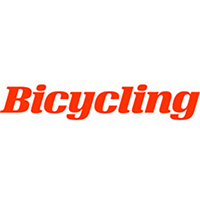
Run Through the Gears
Start your spring check-up by shifting through all of your bike's gear combinations. Make sure the chain moves smoothly, without any skips or stiff spots, and listen for any clicking, popping, or grinding noises, which can indicate drivetrain issues.
More: How to Buy a Used Bike
Show Your Tires Some Love
Pump up your tires to your preferred tire pressure; 24 hours later, check the pressure again. If a tube goes flat immediately, it needs to be replaced. If it loses more than 75 percent of its air overnight, it’s probably time to replace the tubes.
If you have tubeless tires, make sure that the sealant inside is still liquid. If not, clean them out and fill them up again.
Tighten Things Up
Check all of the nuts and bolts to make sure they haven’t loosened. You’ll want to use a torque wrench to make sure you’re tightening them to the correct spec. While you’re doing that, watch out for bolts that have seized.
More: 10 Bike Fit Myths, Busted
Bring it to the Shop
If you find one of these problems and you’re not comfortable doing work on your own, take your bike to a reputable bike shop. While tune-up costs can vary widely between shops, most will run you between $35 and $70, and you’ll have peace of mind knowing your bike is safe and ready to ride for the rest of the season.
Even if you decide that your bike is in good working order, it still doesn’t hurt to take it into a shop and get a safety check done. A mechanic will go over the bike and confirm everything is in tip-top shape—a process that usually only takes a few minutes and dollars to do.
Read the original article published on Bicycling.com.
 Ready to ride? Search for a cycling event.
Ready to ride? Search for a cycling event.

